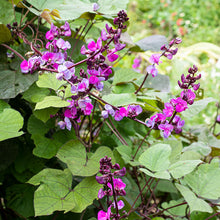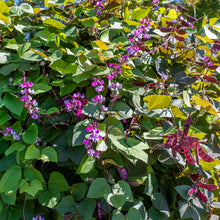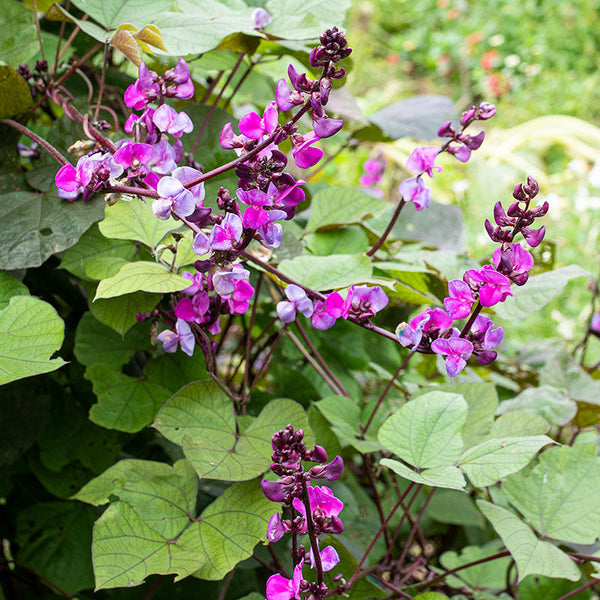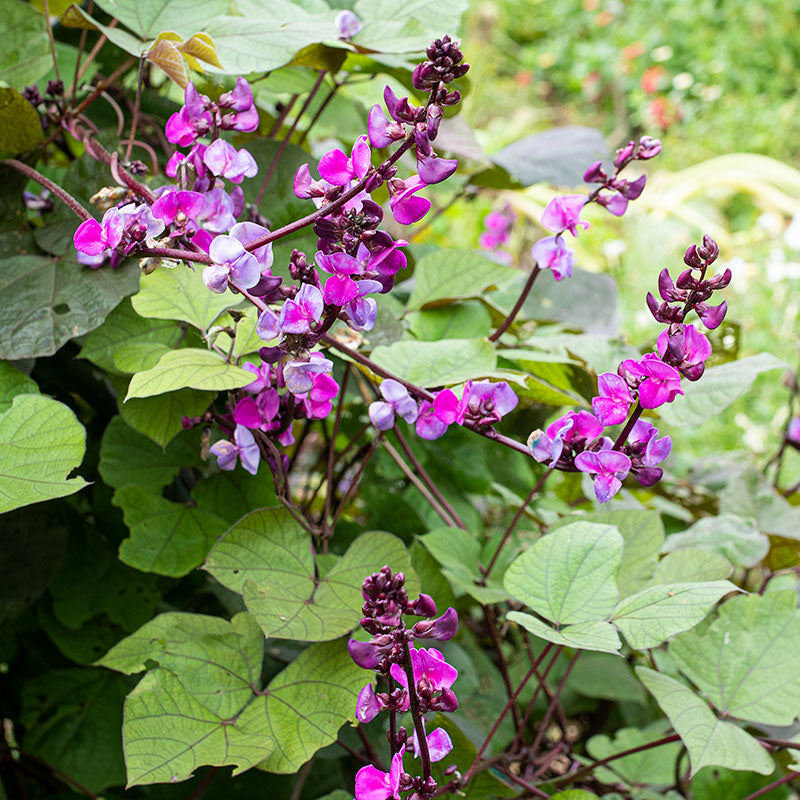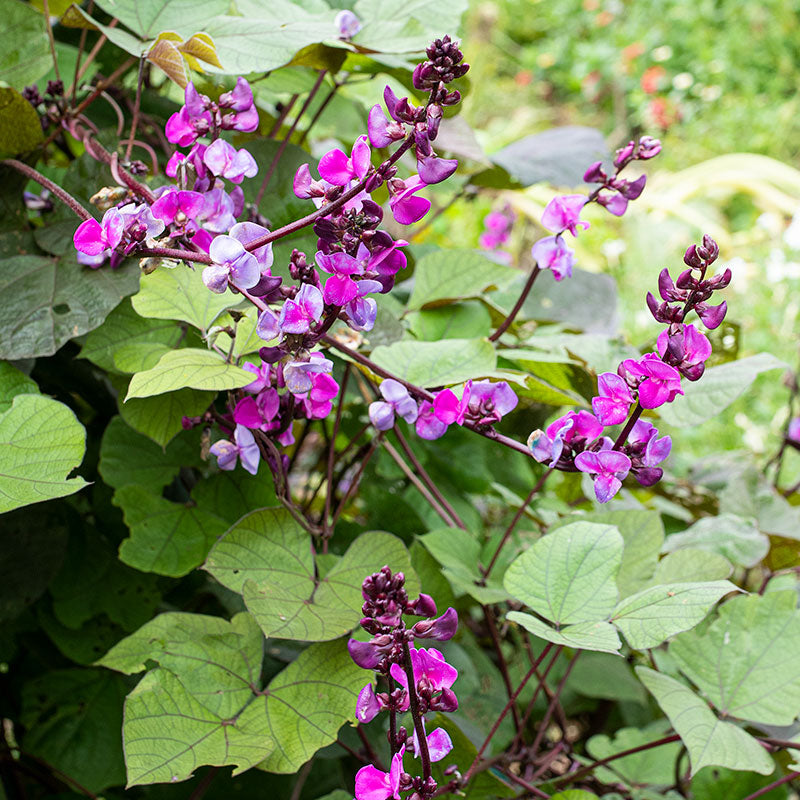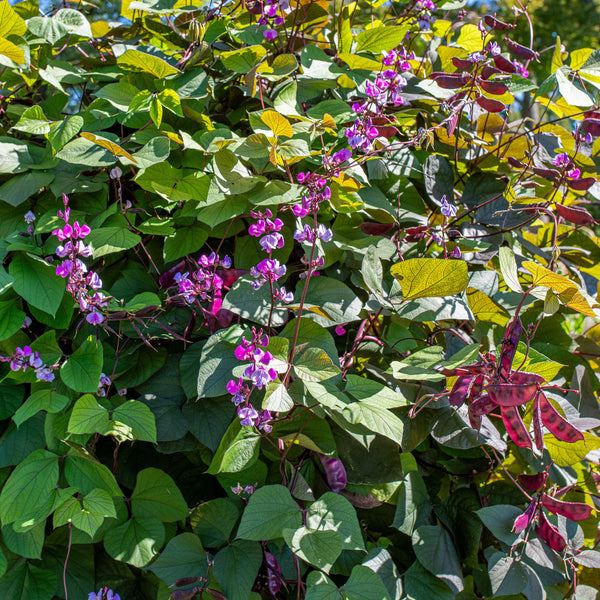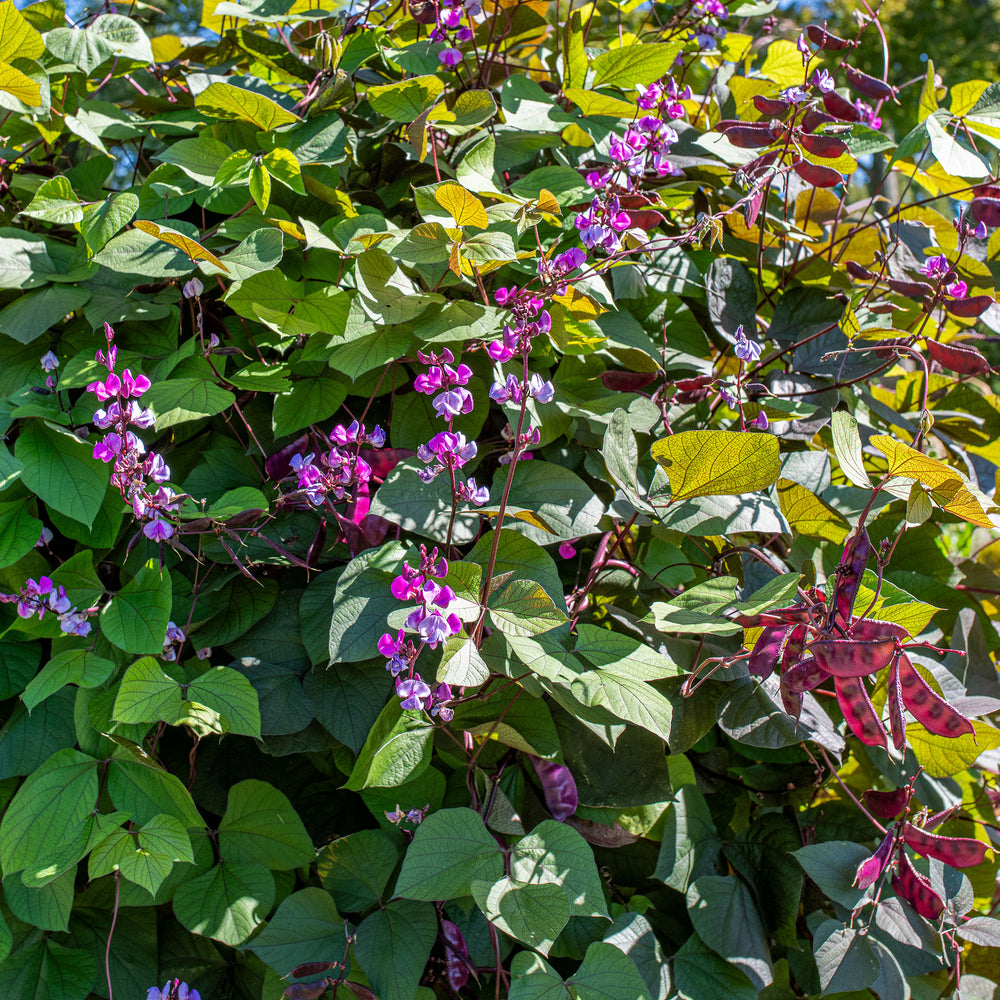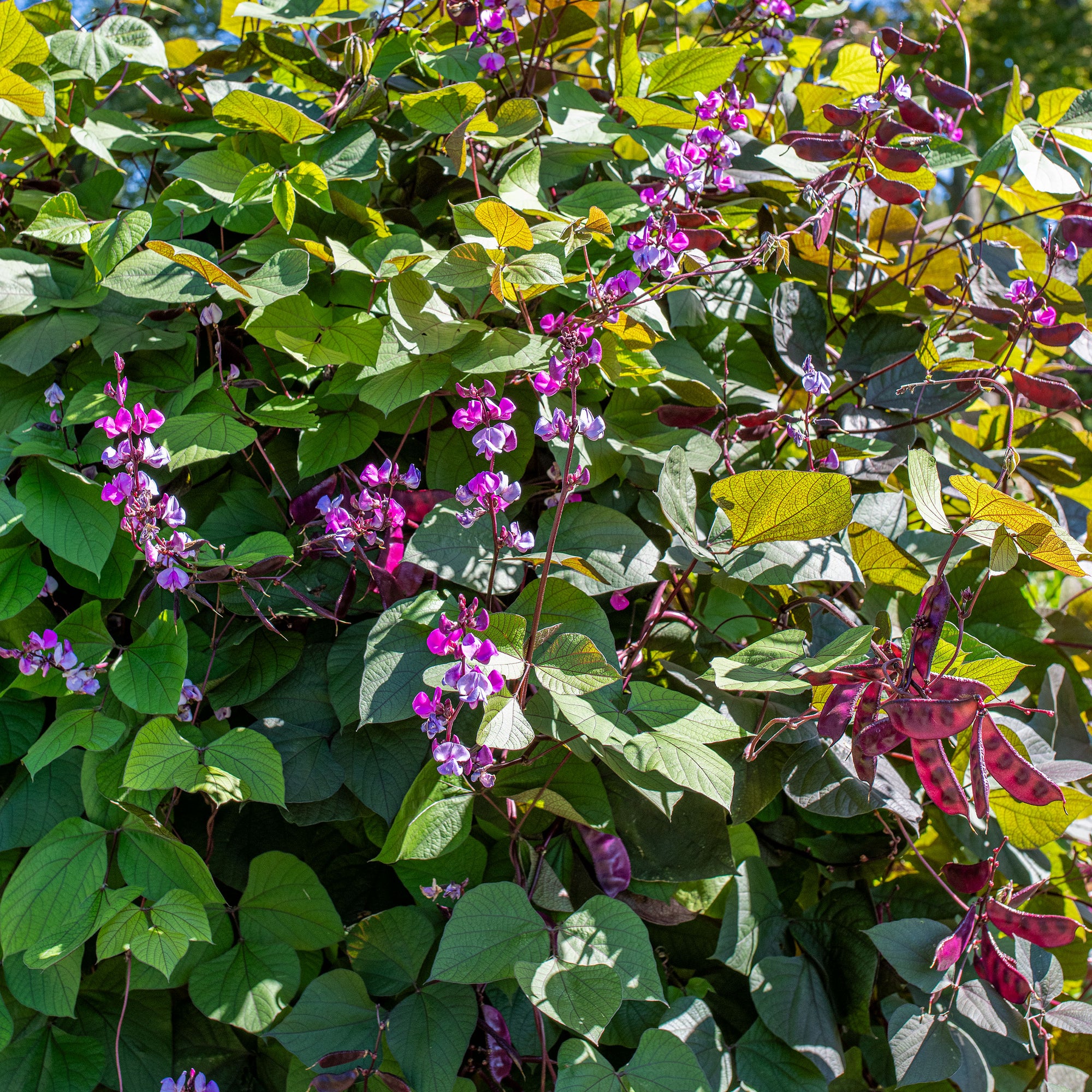Seed Packet
Hyacinth Bean 'Ruby Moon'
Dolichos lablab syn. Lablab purpureus
This heirloom vine arrived on the horticultural scene in 1818 from its native Egypt. The hyacinth bean is a fast-growing beauty renowned for its violet flower trusses and glossy purple pods that follow. It appreciates summer heat that encourages its lush growth and arching blooms mid-summer to fall.
SKU #S323
Caution: Poisonous. The purchaser assumes all liability related to the use of this product.
Currently Unavailable
Notify Me When Available






























